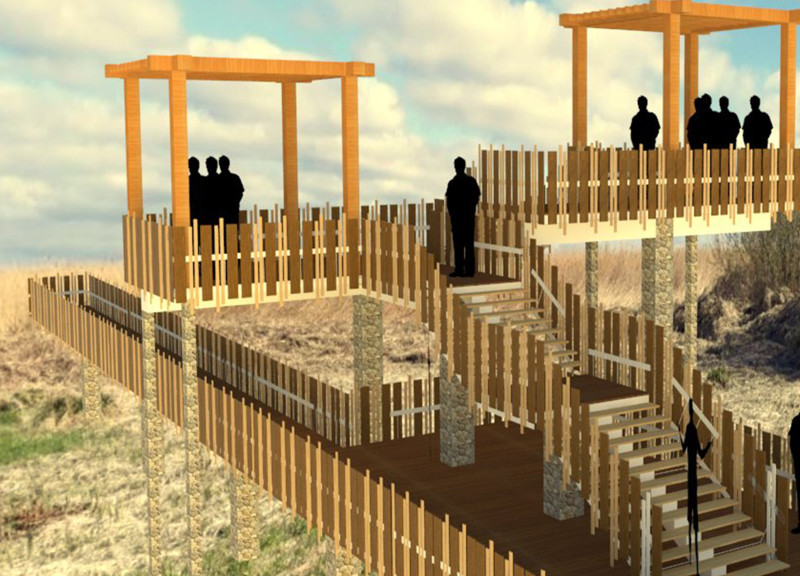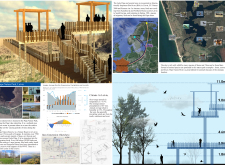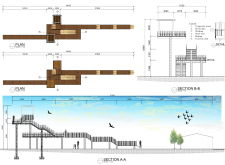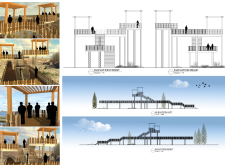5 key facts about this project
The primary function of this architectural endeavor is to provide an elevated space from which visitors can observe the unique ecosystems of the nature park without disturbing the local wildlife. Through a series of interconnected platforms and viewing towers, the design offers multiple vantage points, encouraging visitors to immerse themselves in the natural beauty of the landscape and the flora and fauna inhabiting it.
At the core of the project is the platform itself, which features a multi-tiered structure that rises gracefully above the surrounding terrain. This elevation not only permits an appropriate viewing experience but also ensures that the platform has minimal impact on the delicate ecosystems below. Constructed using a combination of composite wood, steel, and concrete, the architectural design prioritizes durability and eco-friendliness. The use of composite wood contributes to a warm aesthetic that integrates harmoniously with the organic hues of the landscape, while the steel framework provides the necessary structural support to withstand environmental challenges.
A notable element of the design is the series of lookout towers, which dot the landscape, each uniquely positioned to offer distinct perspectives. These towers are equipped with weather-resistant canopies, which not only provide shelter for visitors but also invite them to linger and observe the surrounding environment. By combining functionality with visual appeal, the architectural design effectively promotes an interactive experience that encourages conservation awareness.
Sustainability is woven into the fabric of this project, as the elevated boardwalks allow for airflow and minimal ground disturbance. By lifting the walking surfaces above the terrain, the design preserves the existing wildlife corridors and vegetation, maintaining the natural habitat for various species. Moreover, interpretive signage is strategically integrated throughout the platform, offering educational insights about local ecosystems and conservation efforts. This thoughtful approach not only serves to inform and engage visitors but also cultivates a sense of stewardship and responsibility toward the environment.
What sets this project apart is its ability to balance aesthetics with utility. The architectural design does not merely serve a functional purpose but also enhances the overall visitor experience by providing comfortable spaces for observation and reflection. The careful selection of materials further ensures that the platform remains resilient against the elements, fostering a long-term relationship with the site.
Overall, the architectural design for the viewing platform at Pape Nature Park exemplifies a responsible approach to integrating human activity within natural settings. The project effectively highlights the importance of environmental conservation while offering a practical and inviting space for visitors to connect with nature. To gain further insights into the architectural plans, sections, designs, and ideas that inform this project, readers are encouraged to explore the presentation of this unique architectural endeavor. In doing so, they can appreciate the thoughtful intricacies and design choices that have shaped this significant space.

























